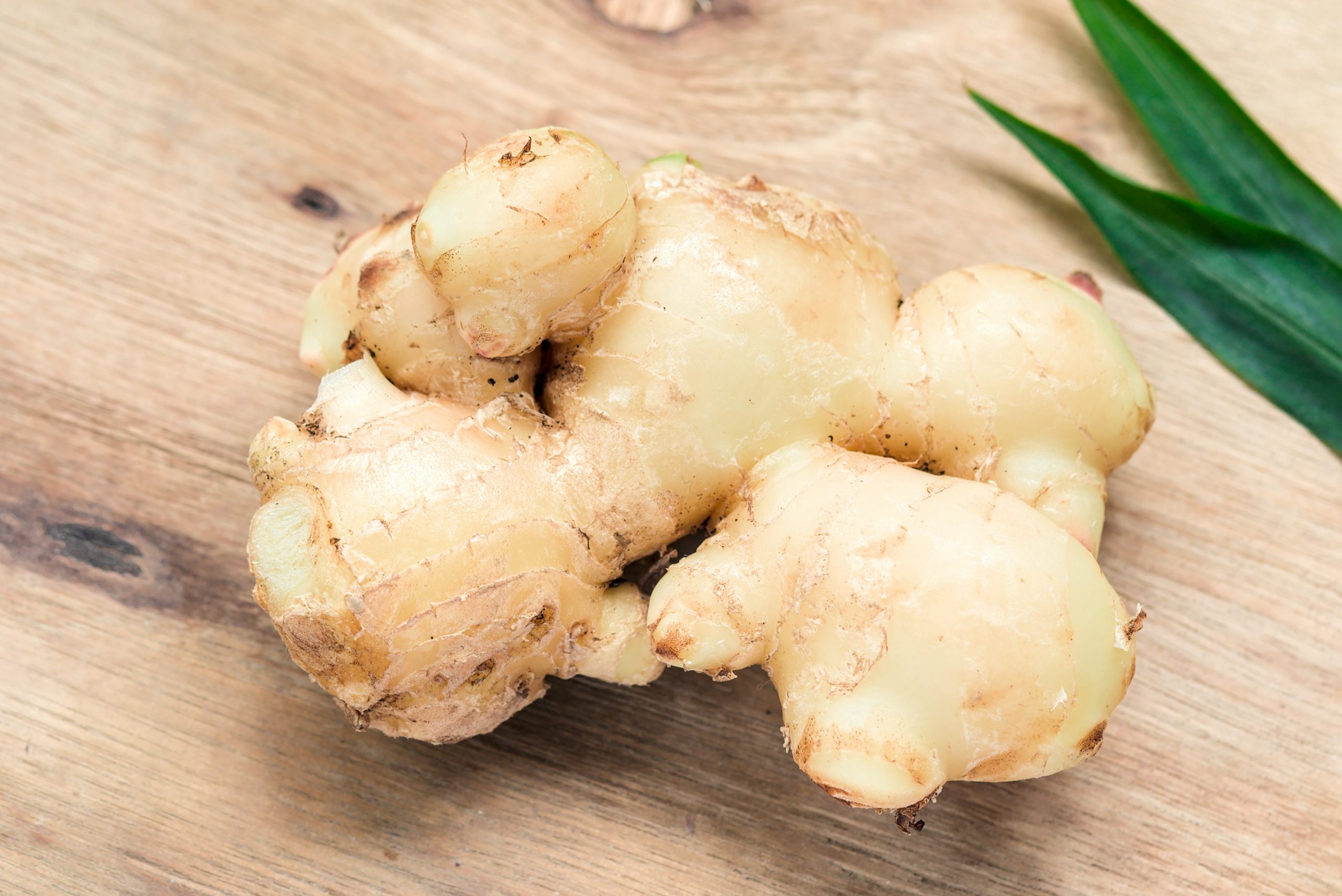”Ginger is a flowering plant whose rhizome, ginger root or ginger, is widely used as a spice and a folk medicine.
When we were kids, the one of two things that my father did in the kitchen was marinate the meat for dinner. (The other was pickle cucumber, that is for another time). This involved soy, cornflour, sesame oil, sugar, garlic and of course, ginger. All made a very delicious marinade, but the problem for me was that he used to do rather large chunks of ginger – no such thing as a thin slice of ginger, or chopping it up finely, or mincing ginger. Great big slabs of ginger (unpeeled). This could be due to his complete lack of culinary skills, but it was also his belief in both the medicinal benefits of ginger and also that he LOVES it (almost as much as coriander, but that is again another story).
Suffice to say, that if I bit into a big slice of ginger, it was too much – a really big slug of ginger is pretty pungent and strong. It did indeed put me off ginger for quite some time, now I am almost as bad as him and ginger is a constant in most (if not all) the asian cooking I do!
But ginger has a very long history and so I took it upon myself to do a bit of a read up and find out a bit more about it – from its origin in Southern China to Europe. From its use as a medicine to being drunk steeped in water as tea and being made into gingerbread or candied ginger and added to stews and curries.
The history of ginger seems to be that it originated in Southern China – used for its medicinal qualities as well for use in sweet and savoury cooking, dating back to the Han Dynasty in the 3rd Century BC. Ginger is a flowering plant, which produces rhizomes – long horizontal stems grown under ground – which is the ginger which we eat. 
It is a cousin to turmeric, galangal and cardamon and creates a physical sensation in the mouth when it is eaten (for me, obviously, this did not appeal to me when young!). The Chinese classify it as a pungent ingredient (similar to garlic, chillies and mustard). When ginger is young it is pale yellow with a rosy pink edging and spiky horns of tightly furled leaves. As it gets older, the skin thickens and gets fibrous and more peppery in flavour. The chemical composition changes and the lemony freshness that it exhibits when it is young changes to the spicier, peppery flavours that you get in gingerbreads etc.
So, although I did not realise one of the original uses for ginger (or many other spices), was that it was to use it to mask the taste of putrid meats and proteins. This seems a little odd, as I would have thought that even though ginger may disguise the taste of off meat – it would still make you sick to eat! I have read that maybe ginger and other spices and aromatics were used to reduce any distasteful flavours in the meat or fish (make them not so meaty or fishy tasting, if that makes sense!). To purify the flavours.
This use of aromatics to disguise excessive flavours (or to “correct” flavours) is used in other cuisines – other Asian cuisines, Indian, Middle Eastern for example.

Ginger is one of the fundamental aromatics used in most asian cuisines. Every recipe seems to start with : finely chop ginger and garlic. As mentioned above it can be added to your stocks, to your veggies and stirfries, in marinades for your meats, added to your curries, have pickled ginger with your sushi or slice it into your tea cup.
You could make some biscuits, some gingerbread, add to your tagines, make some ginger beer?
And of course, it’s medicinal properties may tempt you to try and get more in your diet! It has been known to help :
- Reduce gas and improve digestion
- Reduce nausea including from morning sickness, travel sickness
- Help with cold and flu
- Relieving extreme pain
- Help with premenstrual pain
- Reduce inflammation
* Please check with you doctor before using ginger for these illnesses and symptoms *
It is also to be noted that you need to take pretty high dosages of ginger for relief of these ailments.








